For some, the sight of a snake slithering through the grass is enough to send chills down their spine. While most snakes in America are harmless and even helpful for controlling pests, a few species pack enough venom or attitude to earn their reputation as backyard terrors. From venomous predators to surprisingly aggressive non-venomous species, here are 15 of the scariest snakes you might encounter in American backyards.
1. Eastern Diamondback Rattlesnake
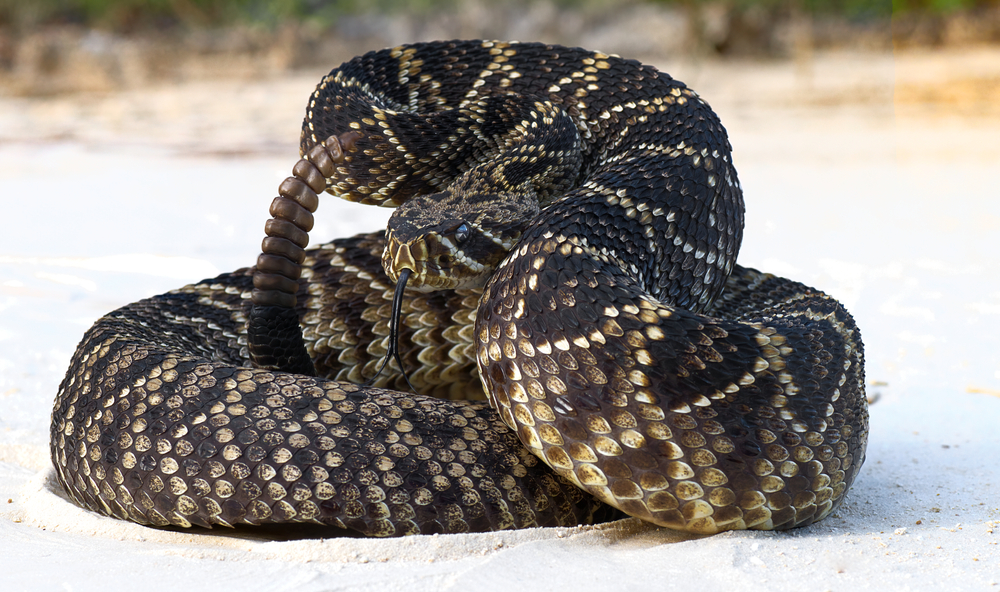
The largest rattlesnake in the U.S., the Eastern Diamondback, is a true icon of fear. Known for its loud warning rattle and striking diamond pattern, this snake is venomous and capable of delivering a powerful bite. Found in the southeastern states, it often hides in grassy areas or underbrush, making it a startling presence in backyards.
2. Copperhead
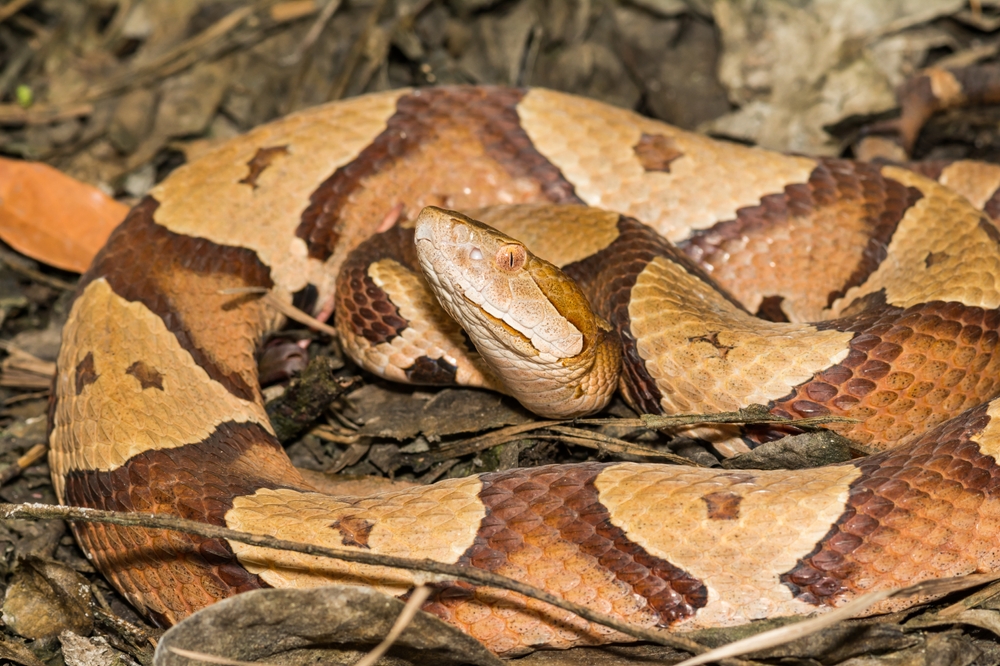
With its copper-colored, hourglass-patterned body, the copperhead is both beautiful and intimidating. This venomous snake is often found in wooded or rocky areas but isn’t shy about venturing into residential spaces. While its bite is rarely fatal, it’s incredibly painful and best avoided by keeping your distance.
3. Cottonmouth (Water Moccasin)

The cottonmouth gets its name from the stark white interior of its mouth, which it flashes as a warning when threatened. This venomous snake prefers wet environments like ponds or swamps but can also appear in nearby yards. Its aggressive demeanor and potent venom make it one to watch out for.
4. Western Diamondback Rattlesnake
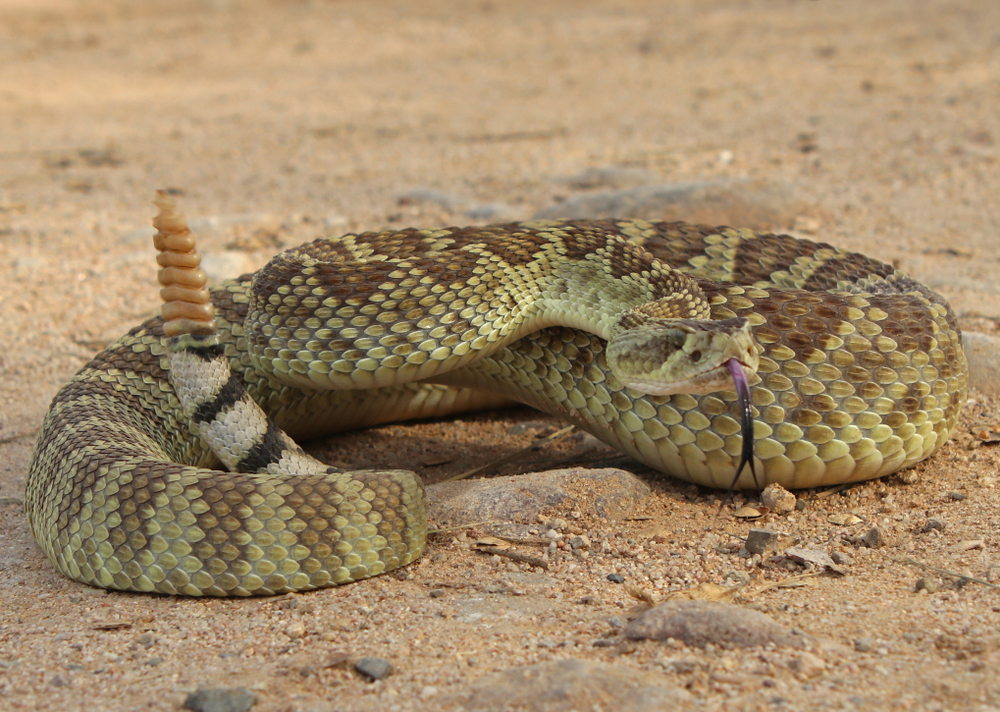
Found in the southwestern U.S., the Western Diamondback is a cousin to the Eastern Diamondback, but no less fearsome. With its thick body and loud rattle, it’s known to stand its ground when threatened. These snakes are a common encounter in desert landscapes and rocky backyards.
5. Coral Snake
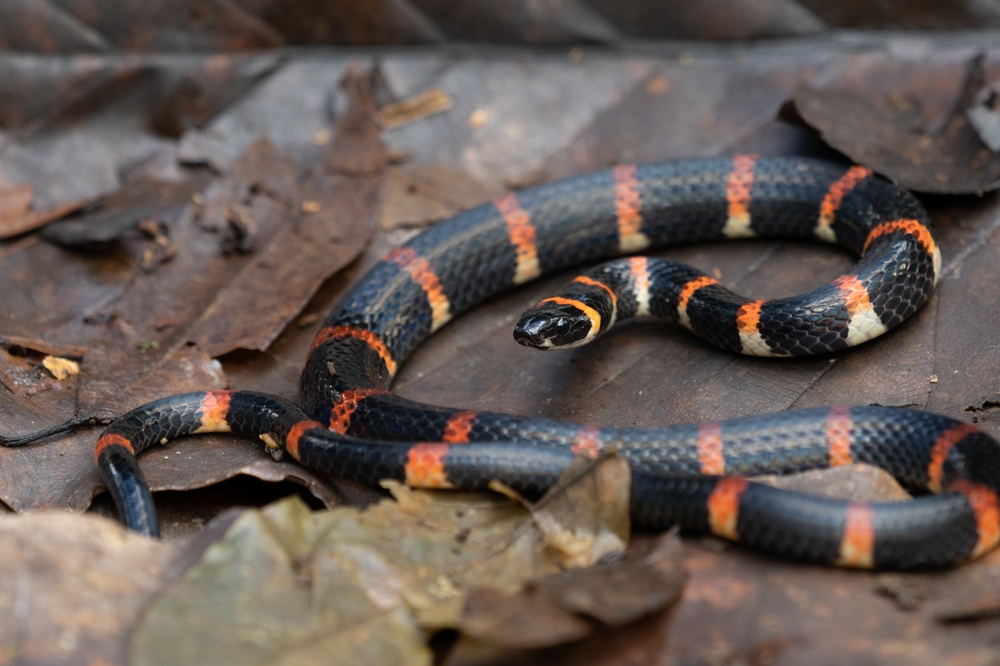
“Red touch yellow, kills a fellow”—this rhyme helps identify the brightly colored and venomous coral snake. Its neurotoxic venom is incredibly potent, though bites are rare due to its shy nature. Found in the southeastern U.S., this snake can occasionally make its way into gardens and flower beds.
6. Timber Rattlesnake
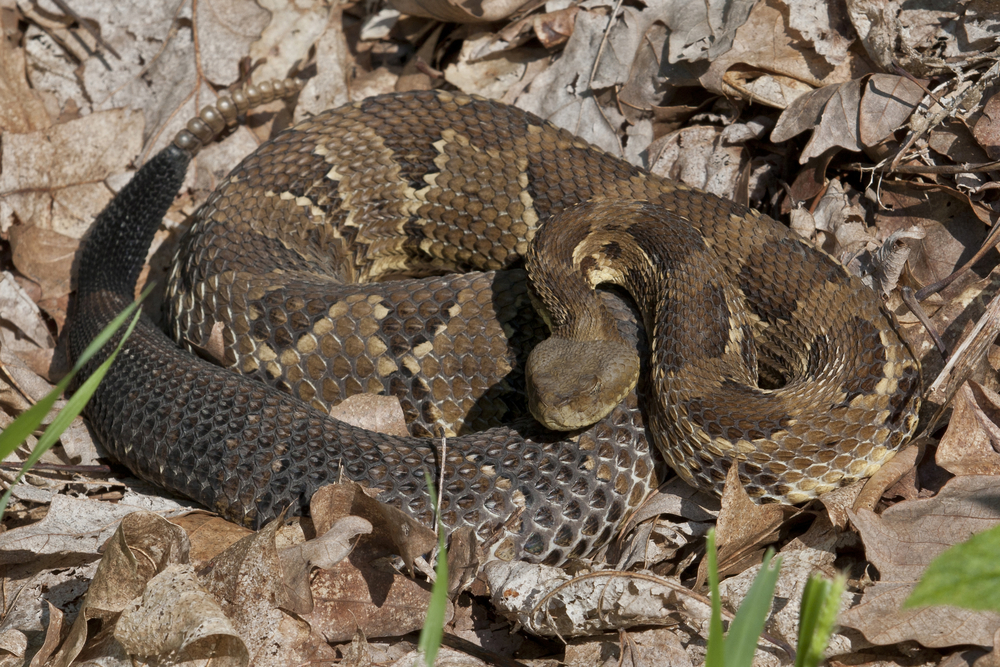
Timber rattlesnakes are large, heavy-bodied snakes with venomous fangs that pack a serious punch. Found in forests and wooded areas across the eastern U.S., they sometimes wander into backyards. Known for their patience, they often rely on camouflage, making them easy to accidentally step on.
7. Black Racer
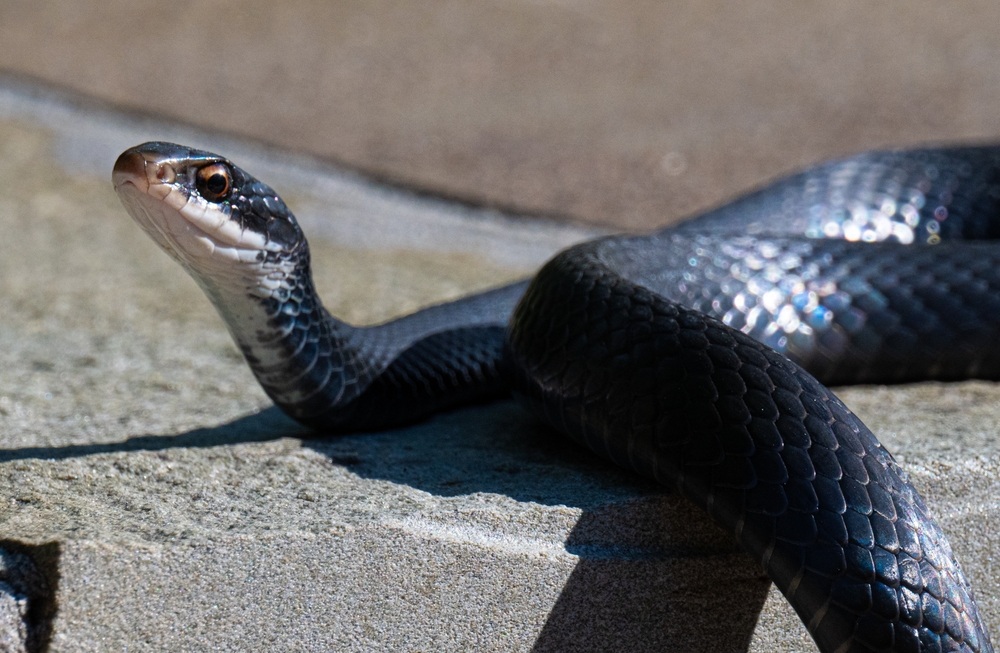
Although non-venomous, black racers are known for their speed and aggression when cornered. They’ll often rear up or strike repeatedly to defend themselves. These sleek, fast-moving snakes are common in the eastern U.S. and frequently turn up in yards, startling unsuspecting homeowners.
8. Prairie Rattlesnake
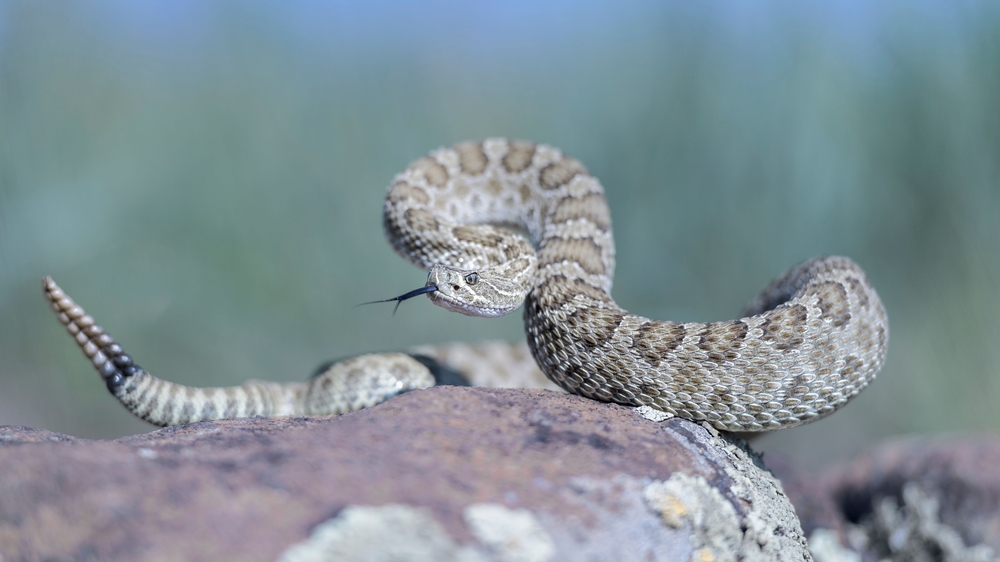
Found in the Great Plains and Rocky Mountain regions, the prairie rattlesnake is a venomous species with a distinct rattle and a bite that’s best avoided. It prefers open spaces but has been known to venture into suburban areas, especially those near fields or wooded trails.
9. Eastern Rat Snake
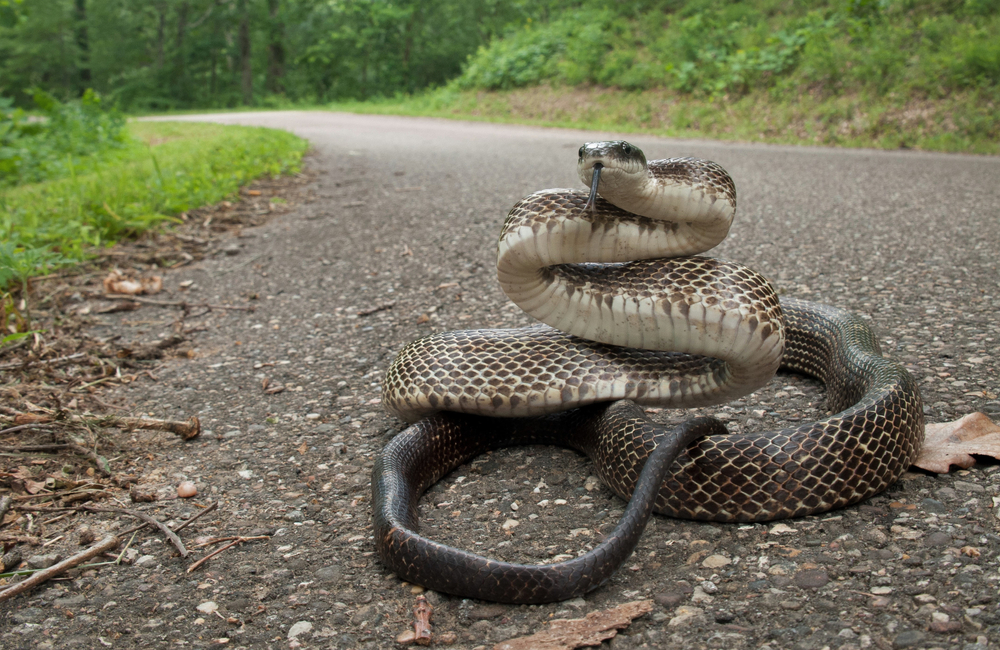
While not venomous, the Eastern rat snake earns its spot for sheer size and audacity. These snakes can grow up to six feet long and are often found in attics, basements, or hanging out in trees. Their defensive hissing and mock strikes can be intimidating, even if they’re harmless to humans.
10. Western Hognose Snake

With its upturned nose and dramatic bluffing behavior, the Western hognose is one of the most theatrical snakes you might encounter. While non-venomous, it will hiss, flatten its neck like a cobra, and even play dead when threatened. This snake’s behavior alone can give anyone a scare.
11. Mojave Rattlesnake

This venomous snake is found in the southwestern U.S. and is infamous for its highly potent neurotoxic venom. Often mistaken for the Western Diamondback, the Mojave rattlesnake is a backyard hazard in desert regions. Its bite can be life-threatening, so it’s one to avoid at all costs.
12. Garter Snake
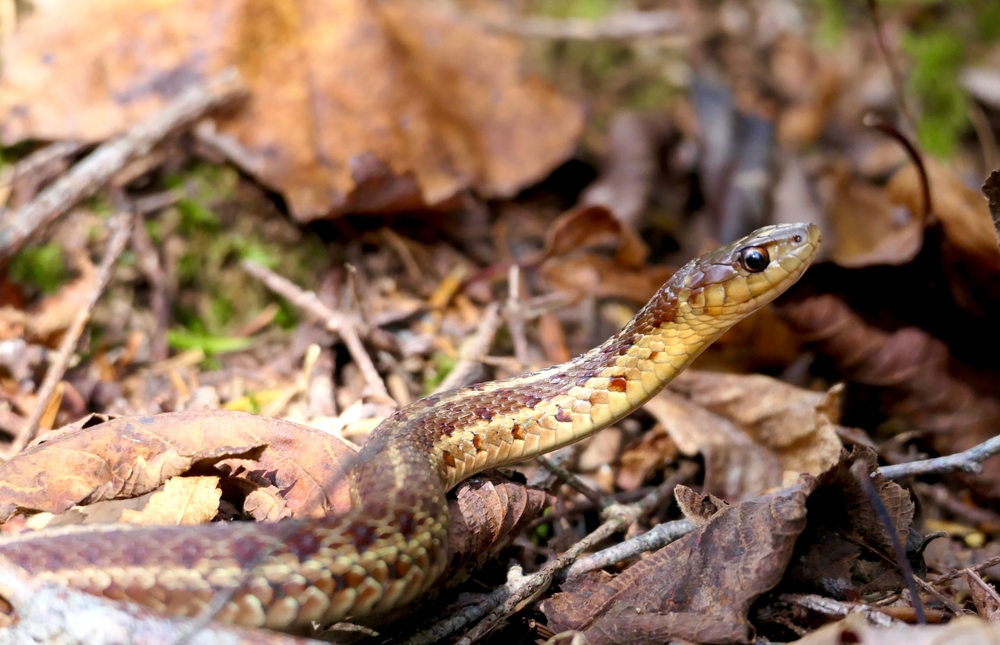
While garter snakes are common and generally harmless, their quick movements and bold patterns often cause alarm. Found across the U.S., they’re curious creatures that may enter yards in search of food. Though not dangerous, their sudden appearances can still send shivers down your spine.
13. Bullsnake
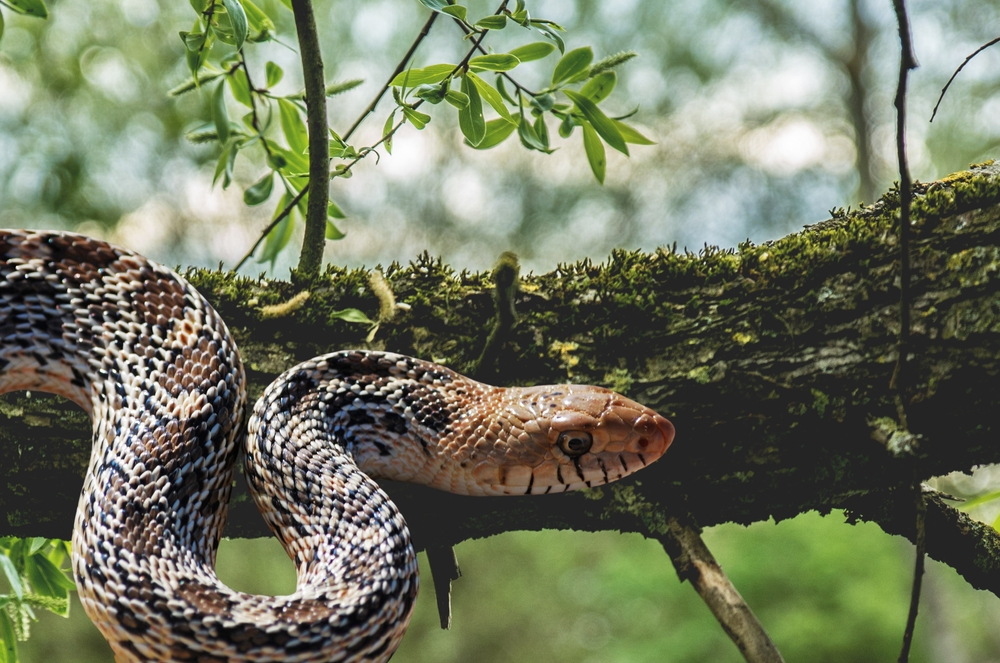
Bullsnakes are large, non-venomous snakes that often get mistaken for rattlesnakes due to their size and pattern. Their defensive behavior includes loud hissing and rattling their tails, which can easily trick someone into thinking they’re facing a rattler. They’re harmless but can be intimidating to encounter.
14. Milk Snake
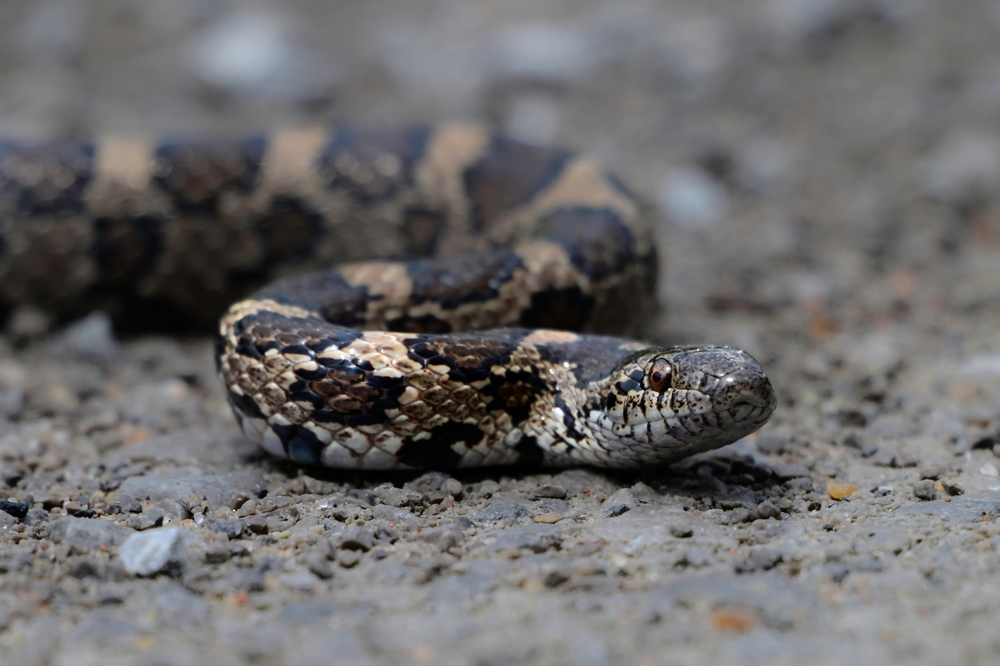
The milk snake’s bold red, black, and white bands make it look eerily similar to the venomous coral snake. Though non-venomous, this harmless snake often causes panic due to its mimicry. Found in gardens and wooded areas, it’s a startling but ultimately harmless visitor.
15. Pygmy Rattlesnake

Don’t let its small size fool you—the pygmy rattlesnake is venomous and packs a painful bite. Found in the southeastern U.S., this snake is often less than two feet long but is highly camouflaged, making it easy to miss until it’s too late. Its faint rattle can be hard to hear, adding to its stealthy nature.
